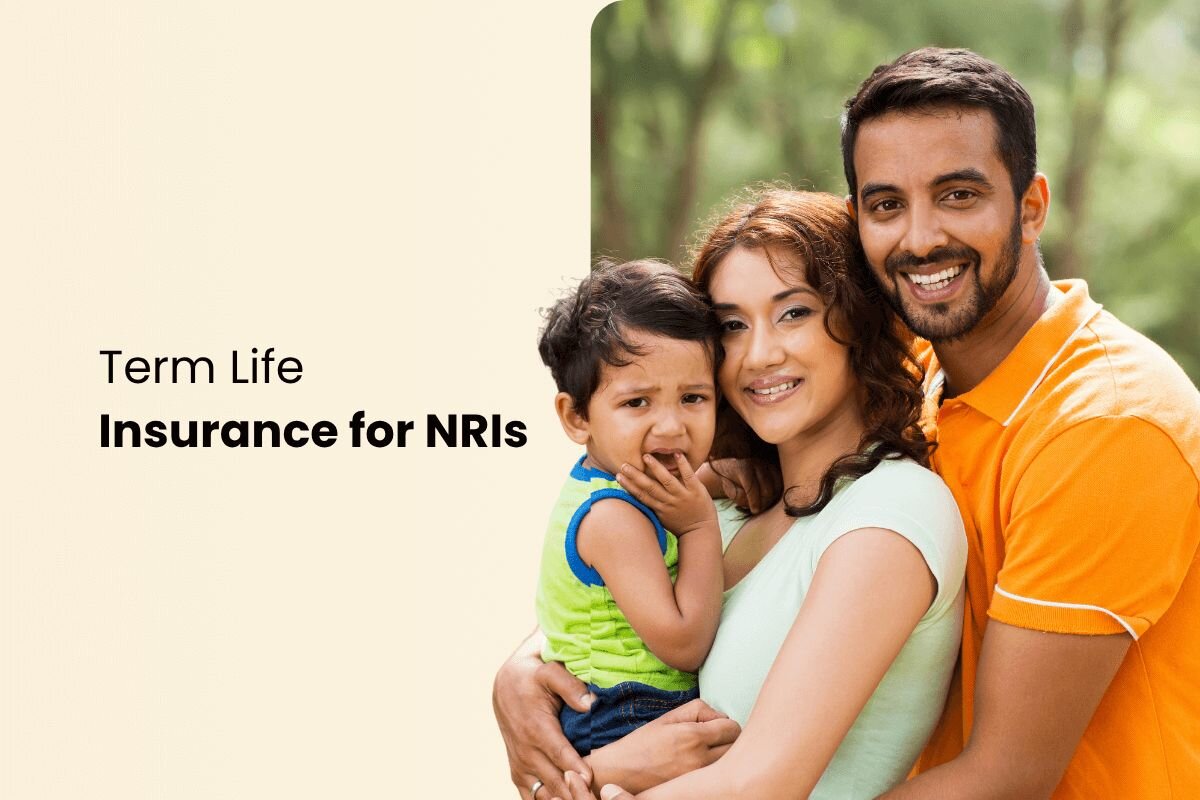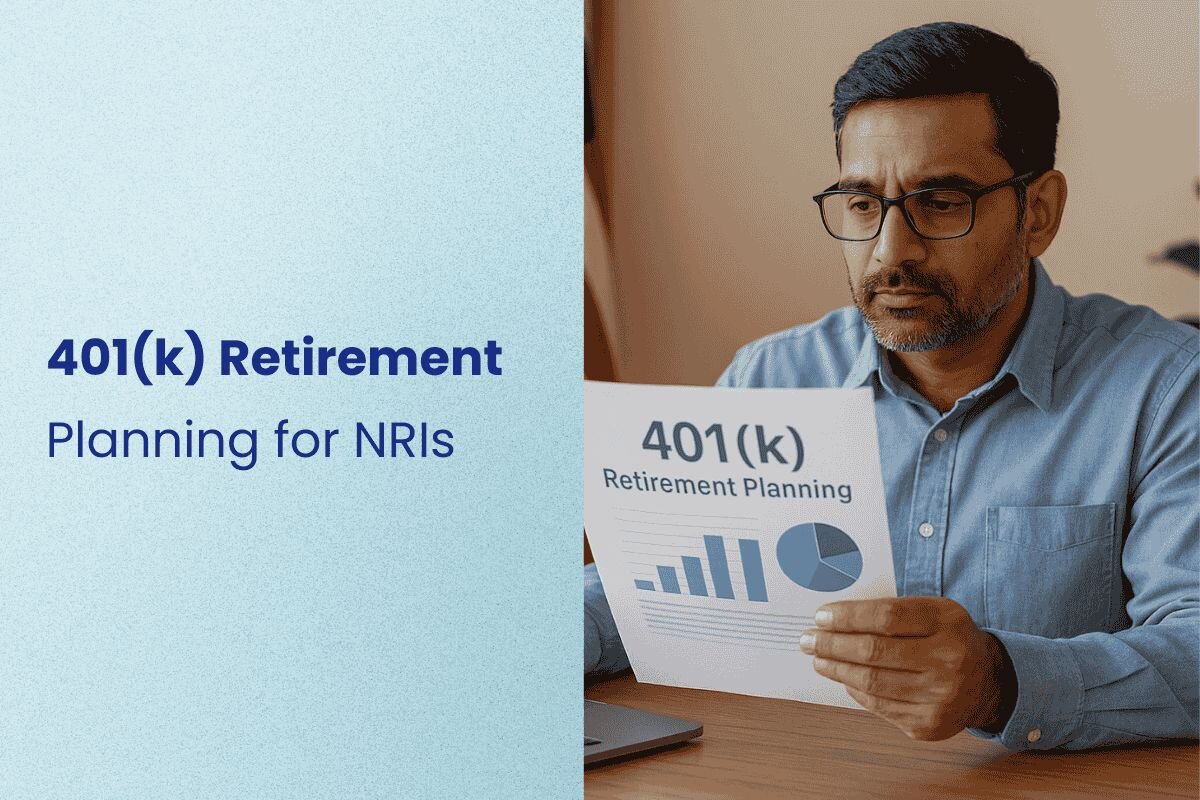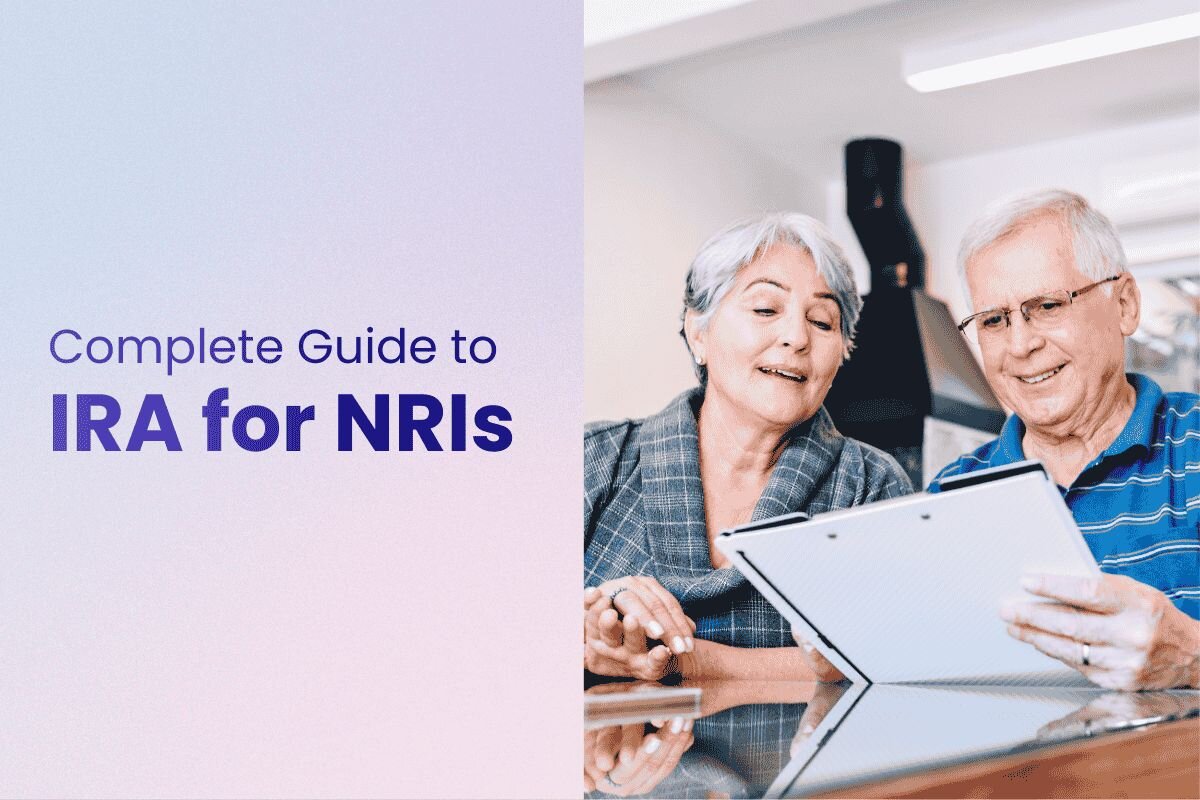Term life insurance for NRIs in India can cost 30–50% less than similar coverage in the UAE or Singapore.
Whether you live in the US, EU, UAE, or elsewhere, these plans offer reliable cross-border protection, keeping your family secure while you’re overseas - all with the convenience of buying and managing your policy online.
In this guide, we’ll take you step by step through everything NRIs need to know to choose the right term life insurance in 2025.
Key Takeaway
Buying term life insurance in India as an NRI in 2025 gives you affordable protection, tax benefits, and peace of mind while living abroad. In this blog, you’ll understand how to qualify, apply, and manage your policy with ease.
- Check eligibility as NRI, Overseas Citizen of India (OCI), or Person of Indian Origin (PIO)
- Gather key documents — passport, visa, income proof, medical reports, and FATCA declaration
- Compare top insurers like ICICI, HDFC, and Max Life for rates, riders, and global coverage
- Apply online with telemedical or in-person exams depending on your profile
- Pay premiums via Non-Resident External (NRE), Non-Resident Ordinary (NRO), or SWIFT channels
- Keep track of policy renewals through portals or mobile apps
- Ensure nominees know the claim process and tax-free benefits under Section 10(10D)
Step 1: Understand Your Eligibility as an NRI
Getting a term life insurance policy as a non-resident requires you to know if you qualify. Indian insurance providers have specific rules to determine who can buy these policies.
Who qualifies as NRI, OCI, or PIO
Indian insurance regulations allow three types of non-residents to buy term life insurance:
Non-Resident Indians (NRIs): You qualify as an NRI if you have a valid Indian passport and live outside India temporarily. Section 6 of the Income Tax Act 1961 defines an NRI as someone who doesn't meet the residence criteria of staying in India for 182 days in the previous year or 60 days in the previous year plus 365 days in the preceding four years.
Overseas Citizens of India (OCIs): These foreign nationals have Indian roots. The Citizenship (Amendment) Act of 2005 created this category to let OCIs live and work in India indefinitely. OCI status gives many benefits but doesn't include full Indian citizenship, voting rights, or government jobs.
Persons of Indian Origin (PIOs): You can be a PIO if you're a foreign citizen (except from Pakistan or Bangladesh) who once held an Indian passport. Your parents or grandparents should have been Indian citizens according to the Constitution or Citizenship Act of 1955. Legal partners or spouses of Indian citizens also qualify.
Age, income, and residency criteria
Insurance providers look at several factors beyond your residential status:
Age limits: NRI term insurance applicants must be between 18 and 65 years old. Many premium insurers set the upper age limit at 60 years. Your age affects how long your policy can last - standard plans cover until age 85, while whole-life policies can extend to 99 years.
Income thresholds: NRIs need a minimum annual income of ₹10 lakh. This shows you can pay your premiums throughout the policy term.
Education requirements: Some insurers want NRI applicants to have at least graduated.
Minimum coverage: NRI applicants usually need a minimum sum assured of ₹50 lakh. This amount is higher than what resident Indians need.
Financial stability proof: Working NRIs must show income documents like salary slips or bank statements. Self-employed NRIs might need extra documentation.
Countries with restrictions or loading charges
Your country of residence affects your eligibility and premium rates:
Geographical loading: Insurance companies add "geographical loading charges" based on where you live. These charges usually add 10% to 20% to standard rates.
High-risk country exclusions: Residents of countries with civil unrest or military conflicts often can't get coverage. Insurance companies maintain lists of excluded countries, so check the policy document carefully.
Nominee considerations: Your nominee needs an active Indian bank account because payouts come in Indian rupees (INR).
NRIs, like resident Indians, must go through medical underwriting and share their health history. Pre-existing conditions won't stop you from getting insurance but might make your premiums higher.
Step 2: Gather the Right Documents
Getting your term insurance application approved as an NRI depends on having the right documents. Insurance companies need specific paperwork to check your identity, financial status, and health condition. You can speed up the application process by getting these documents ready beforehand.
Passport, visa, and address proof
Your passport with latest immigration stamps is the main identification document needed for all NRI term insurance applications. This document proves your identity, nationality, and confirms your non-resident status. You must also provide a copy of your current visa or work/study permit that shows your legal residence status in your country of domicile.
You'll need to submit address proofs for both:
- Indian address: Utility bills, property documents, or bank statements from Indian banks
- Foreign address: Utility bills, rental agreements, or government-issued documents from your country of residence
Insurance companies accept any of these as valid overseas address proofs if they're recent (usually within 3 months) and show your name and address clearly. Some companies might ask you to get these documents apostilled or notarized based on where you live.
Income and tax residency certificates
Your financial capacity determines your coverage eligibility. Here's what you need to prove your income:
- If you're salaried: Recent salary slips, bank statements showing salary credits, or employment contracts
- If you're self-employed: Income tax returns, business financial statements, or bank statements showing regular income
- For everyone: PAN card (if available) or Form 60/PAN declaration
Insurance companies now ask NRI applicants for a Tax Residency Certificate (TRC). Here's how to get one:
- Check your tax residential status with your resident country's tax authority
- Submit your passport copy, tax returns, and country-specific documentation
- Fill out the application form with the relevant tax authority
A TRC confirms your tax status and helps figure out tax benefits under Double Taxation Avoidance Agreements (DTAAs). You'll need to meet residency rules based on physical presence, permanent establishment, and center of vital interests to qualify for a TRC.
Medical reports and FATCA declaration
Medical underwriting is standard for term insurance policies, especially when you have higher coverage amounts:
- Insurance companies require medical exams if you're applying for coverage above certain limits
- You can choose between telemedical assessments or in-person check-ups at approved centers where you live
- Basic tests include blood work, ECG, chest X-ray, and complete physical examination
- You might need extra specialized tests if you have pre-existing conditions
NRI applicants must also complete a FATCA (Foreign Account Tax Compliance Act) declaration. This is vital if you're a US NRI since non-compliance can freeze your account or get your application rejected. The FATCA declaration lets financial institutions report US taxpayers' assets to the IRS, ensuring tax compliance across borders.
You'll also need these documents:
- A completed NRI questionnaire about your stay duration, travel patterns, and occupation
- Recent passport-sized photographs
- KYC (Know Your Customer) documents for standard verification
Having all these documents ready makes your application process faster and increases your approval chances. Most insurance companies now accept digitally signed or scanned copies, making things easier for NRIs in different time zones and locations.
Step 3: Compare Term Insurance Plans
You need to check if you qualify and get your papers ready before you start looking at term insurance plans. The market has many options, and you'll need to look at insurance companies, coverage choices, and extra benefits to find the right policy.
Top insurers offering NRI term plans
Many leading Indian insurance companies give specialized term plans to non-residents with great features:
ICICI Prudential Life Insurance has the iProtect Smart plan that covers you up to 99 years. Premiums start at about ₹15,183 for ₹1 crore coverage. The plan has optional critical illness coverage for up to 60 conditions and built-in terminal illness benefits.
Max Life Insurance gives you the Smart Secure Plus Plan with joint life coverage. Premiums start from about ₹10,297. You can pay premiums whenever it suits you and boost your sum assured when needed.
Tata AIA Life Insurance stands out with its Sampoorna Raksha Supreme plan that covers you until you're 100. Premiums start around ₹22,296. Their Maha Raksha Supreme Select Plan gives you ₹2 crore life cover at roughly ₹679 monthly with up to 18.5% off on first-year premiums.
HDFC Life gives complete NRI term plans with worldwide coverage. You can live anywhere and still be covered. Their policies let you customize premiums and payment options based on your needs.
Coverage options and premium ranges
Buying term insurance in India costs much less than international options:
A 30-year-old male non-smoker looking for ₹1 crore coverage pays about ₹500-800 monthly (₹6,000-9,600 yearly) in India. The same coverage from UAE providers costs ₹2,200-3,300 monthly (₹26,400-39,600 yearly). You save about ₹1,000-2,000 monthly or ₹12,000-24,000 yearly.
Coverage amounts range from ₹50 lakh to ₹5 crore, based on your income and needs. Most experts say your sum assured should be 10-15 times your yearly income.
Your premium rates depend on:
- How long you want the policy (5 to 99 years)
- How much coverage you need
- Which country you live in
- How often you want to pay
NRIs can pay premiums yearly, half-yearly, quarterly, or monthly. Payment choices include:
- Regular payments throughout the policy
- Payments for a set number of years
- One-time payment option
Riders like critical illness and disability
You can add these useful riders to your basic term plan to get more protection:
Critical illness coverage pays you a lump sum if doctors diagnose you with specific serious conditions like cancer, heart attack, or kidney failure. Some insurers cover up to 34 critical illnesses. This helps you handle big medical bills without using your savings.
Accidental death benefit riders give extra coverage if death happens due to an accident. This extra protection helps NRIs who work in dangerous jobs.
Terminal illness benefits pay part of your sum assured early if you get a terminal condition. This money helps with treatment costs and other expenses during tough times.
Waiver of premium on disability keeps your policy going even if you become permanently disabled and can't work. You don't need to pay future premiums but keep your coverage.
Permanent disability protection helps financially if long-term disabilities affect your ability to earn.
Look at these riders based on your job, lifestyle risks, and your family's medical background. Insurance experts suggest getting at least critical illness coverage since treatment costs are high and you might lose income while recovering.
Step 4: Apply and Complete Medicals
The application process for term life insurance as an NRI has become much simpler now that you have your documents ready and know your ideal plan. Insurance companies have made it easy to apply and complete medical check-ups from anywhere in the world.
Online application process
You don't need to travel to India anymore to get term insurance. You can complete your application online by following these steps:
- Select your preferred plan from an insurer that accepts applications from your country of residence
- Complete the online application form with accurate personal, health, and financial details
- Upload scanned copies of all required documents including passport, visa, and income proofs
- Schedule your medical examination based on insurer recommendations
- Make the premium payment through approved channels
Insurance companies now offer accessible interfaces that guide you through each application step. You must provide complete and accurate health history information because hiding facts could lead to claim rejection later.
Telemedical vs in-person check-ups
NRIs must get medical examinations for term insurance, but you don't always need to be in India. Insurance companies now give you multiple options:
Telemedical assessments have changed the game for NRIs living abroad. These check-ups usually include:
- A video call with a designated medical examiner
- Questions about your health history and current condition
- Visual assessment of your physical state
- Documentation of pre-existing conditions and medications
In-person examinations might still be needed if:
- You're applying for very high sum assured policies
- You have pre-existing medical conditions
- You're above age 45
- Specific underwriting guidelines require it
When you need an in-person exam, you can either get it done during your next India visit (insurer covers costs) or go to approved medical centers in your country (you might need to pay).
Your risk profile helps decide between telemedical and physical examination. Younger, healthier applicants who want moderate coverage usually qualify for telemedical options.
Tips for faster approval
You can speed up your application approval by focusing on these key factors:
Complete all requirements promptly – Your policy will be issued faster when you finish all steps quickly.
Get ready for telemedical interviews by:
- Having your medication list ready
- Compiling recent test results
- Noting dates of past surgeries or hospitalizations
- Finding a quiet, well-lit location for the video call
Stay honest about your medical history, family health background, and lifestyle habits. Quick approval through dishonesty could backfire when claims are rejected later.
Pick the right time for your telemedical examination when you're alert and can focus without interruptions for 45-60 minutes.
Use the right payment method like credit/debit cards, SWIFT transfers, or NRE/NRO accounts to avoid delays.
Telemedical assessments have made the process available to more people by removing travel needs and reducing wait times between application and policy issuance. These breakthroughs have been especially helpful when international travel becomes unpredictable or restricted.
Step 5: Make Payments and Track Policy
Your term life insurance policy becomes active after application approval. You need to understand payment methods and coverage monitoring to keep your policy running smoothly. Your family's financial security depends on active policy status through on-time premium payments and regular reviews.
Payment options: NRE/NRO, credit card, SWIFT
NRIs now have several convenient ways to pay their premiums:
NRE/NRO Accounts: Your NRE and NRO accounts link directly to handle premium transactions. NRE accounts hold your foreign earnings, while NRO accounts manage your India-based income. These accounts give you tax benefits and easy internet banking options for policy payments.
Credit/Debit Cards: You can use international Visa, MasterCard, and Amex cards to pay premiums instantly. This quick method needs just one-time card activation and PIN entry to complete transactions.
SWIFT Transfers: Your foreign bank accounts can send direct payments through SWIFT electronic transfers. This service handles payments in 13 currencies including USD, EUR, GBP, SGD, JPY, AUD, NZD, ZAR, CHF, SAR, AED, SEK, and CAD.
Additional Methods:
- Cheque payments from NRE, NRO, or FCNR (Foreign Currency Non-Residential) accounts
- Digital wallets and UPI options from select insurers
Choosing payment frequency
Insurance companies let you pick payment schedules that work best for you:
Annual payments give you the best value with discounts compared to other options. You pay once yearly, which cuts down on fees and paperwork.
Semi-annual payments split your premium into two parts every six months. This option strikes a balance between yearly and quarterly payments.
Quarterly payments break your annual premium into four equal parts every three months. This works well if you want smaller, easier-to-manage amounts.
Monthly payments let you spread costs across twelve smaller payments. You might pay extra processing fees, but it helps with monthly budget planning.
Pick a schedule that matches your cash flow and financial priorities. Many NRIs choose annual payments through NRE/NRO accounts to reduce costs and paperwork.
Tracking policy status and renewals
Your policy protection stays uninterrupted when you stay informed about its status:
Online Customer Portal: Your insurer's portal lets you:
- Check when premiums are due and payment status
- See policy details including coverage amount and term
- Update your personal information and beneficiary details
- Download policy documents and payment receipts
Register on your insurer's website with your policy number, birth date, and premium amount. After email or SMS verification, you create a password for future access.
Mobile Applications: Insurance apps give you up-to-the-minute policy information and alert you about upcoming premiums.
Customer Support: NRI helplines work extended hours across time zones. You can also get help through email and video consultations.
Renewal Tracking: Keep your policy active by:
- Setting calendar reminders 15-30 days before due dates
- Turning on app or portal notifications
- Setting up automatic payments from your NRE/NRO account
Regular policy reviews help ensure your coverage meets your changing life needs. Insurers send renewal notices 30-45 days before due dates so you have time to arrange payments.
Step 6: Understand Claims and Taxation
Understanding the claim process and tax implications is a vital part of your NRI term insurance trip. This knowledge will give your beneficiaries fewer hurdles when filing claims and help them get the maximum financial benefit from your policy.
Claim process for deaths abroad
The claim settlement process for NRIs follows a simple path with four main stages. Your nominee must notify the insurer about your death within 90 days. They need to submit these essential documents:
- Death certificate verified by the Indian Embassy or High Commission in the country where death occurred
- Employer certificate with leave details if you have a salaried job
- Embalming certificate (if applicable)
- Medical records or accident reports
- Nominee's KYC documents and bank proof
Official translations are needed for non-English documents. Insurers usually complete verification within three months. Some companies now speed up settlements to 15 days for straightforward cases.
Tax-free benefits under Indian law
NRIs get great tax advantages under Indian law through term insurance. Your nominee's death benefit is completely tax-exempt under Section 10(10D) of the Income Tax Act, 1961. The premiums you pay toward term insurance also qualify for deduction under Section 80C up to ₹1.5 lakh per year.
The tax exemption comes with these conditions:
- Policies bought on or after April 1, 2023 should have total annual premium not exceeding ₹5 lakh
- Policies issued between April 1, 2012 and March 31, 2023 should have annual premium within 10% of sum assured
- Older policies (before March 31, 2012) have a premium threshold of 20% of sum assured
TDS and repatriation of claim amount
Most insurers transfer payouts to the nominee's NRE account with a source-of-funds letter. If your policy qualifies for exemption under Section 10(10D), there's no TDS deduction on death benefit payouts.
Policies that don't comply with Section 10(10D) conditions face TDS under Section 195. Any interest from delayed claim settlement is taxable as "income from other sources".
Foreign residents can reduce or eliminate TDS through Double Taxation Avoidance Agreements (DTAAs). Nominees must:
- Submit e-filed Form 10F via the Income Tax Portal
- Provide a valid Tax Residency Certificate from their country of residence
Note that death benefits might be tax-exempt in India but could still be taxed in your country of residence. Getting advice from a tax advisor who knows cross-border taxation is vital.
Read about - How to Repatriate Funds from India
Conclusion
Term life insurance is a crucial financial safety net for NRIs, offering cross-border protection at premiums 30–50% lower than international plans. With the right documents and a few simple steps, you can buy and manage your policy from abroad while ensuring your family is financially secure.
Indian term plans also come with tax benefits, like tax-free death benefits under Section 10(10D) and premium deductions under Section 80C, making them a smart addition to your global financial strategy. Getting coverage early and reviewing it regularly ensures your protection keeps pace with your evolving international lifestyle.
Frequently Asked Questions
Can NRIs buy term life insurance in India?
Yes, NRIs, PIOs, and OCIs can buy term life insurance in India as long as they meet eligibility criteria set by insurers. Policies can often be purchased online, and coverage is valid even if you live abroad.
Which factors should NRIs consider when choosing a term insurance policy?
NRIs should look at coverage amount, policy tenure, claim settlement ratio, global coverage, premium payment options (INR or foreign currency), and available riders like critical illness or accidental death.
How much does term insurance cost for NRIs, and are premiums cheaper in India?
Term insurance in India is typically 30–50% cheaper than similar coverage in countries like UAE or Singapore. Premiums depend on age, health, coverage amount, tenure, and country of residence, but buying in India often provides cost-effective protection.
What documents are required for NRIs to buy term insurance?
Commonly required documents include a valid passport, visa/residence proof, NRI status proof, PAN card, proof of income, and sometimes medical records. Requirements may vary slightly by insurer.
Are term insurance benefits taxable for NRIs, and can premiums be claimed under Section 80C?
Death benefits from term insurance are generally tax-free under Section 10(10D) in India. NRIs can also claim premium deductions under Section 80C if they pay taxes in India. Check double taxation rules if you reside abroad.
How can beneficiaries claim term insurance benefits if the policyholder lives abroad?
Beneficiaries can usually file a claim online or via post with the insurer. Indian insurers have processes in place for cross-border claims, and payouts can often be repatriated to foreign bank accounts.
About the Author

By Prakash
CEO & Founder of InvestMates
Prakash is the CEO & Founder of InvestMates, a digital wealth management platform built for the global Indian community. With leadership experience at Microsoft, HCL, and Accenture across multiple countries, he witnessed firsthand challenges of managing cross-border wealth. Drawing from his expertise in engineering, product management, and business leadership, Prakash founded InvestMates to democratize financial planning and make professional wealth management accessible, affordable, and transparent for every global Indian.




